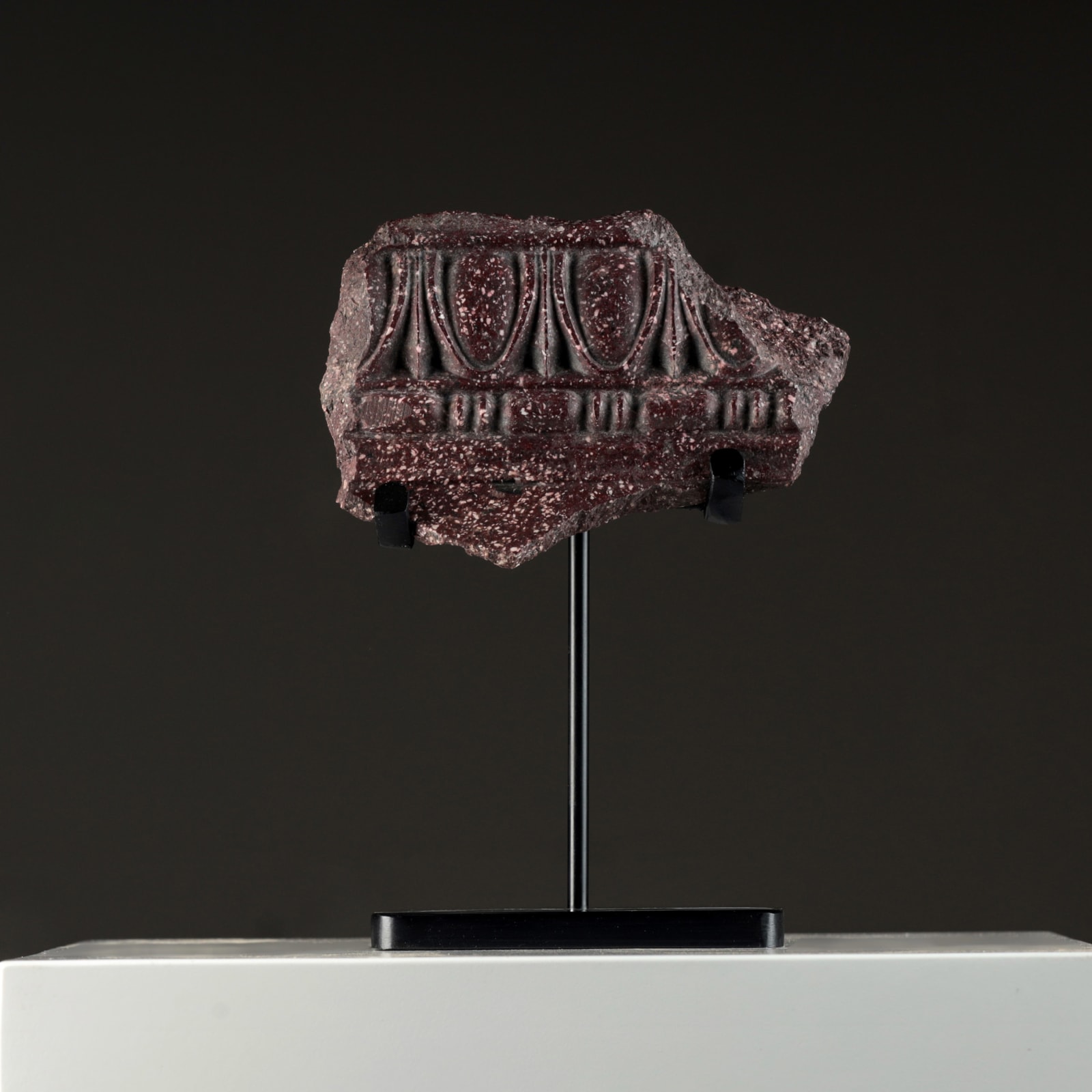Imperial Porphyry Fragment, XVIII Century (SOLD)
A rare fragment of Imperial porphyry, expertly carved in classical egg and dart motif.
Likely dating the 18th century this fragment would've original formed part of a larger sculpture, the colour is a deep purple and the carving is crisp.
Now mounted on a removable contemporary museum stand.
Just the Fragment
Height: 10cm
Width: 15cm
Depth: 5cm
On Stand
Height: 20cm
Width: 15cm
Depth: 6cm
A History of Porphyry
Imperial Porphyry is arguably the rarest and most historically important stone in the world. It comes from only one source; a single mountain in Egypt that the Romans called Mons Porphyry. It is a purple, volcanic stone, very dense and fine-grained, with small white inclusions.
According to Pliny’s Natural History, Imperial Porphyry was discovered in 14 AD by Caius Cominius Leugas, a Roman legionary. Seeing that this hard stone was the purple color which symbolized Imperial power, he had samples brought to the Emperor Tiberius in Rome. When Tiberius saw that this royal-colored stone was solid enough for building and carving, he decreed that “Imperial Porphyry” would be for the use of the Imperial family only.
Tiberius quickly established a quarry on Mons Porphyry and began to use the stone for the decoration of Imperial palaces and other buildings. Later emperors continued the tradition. Imperial Porphyry was used for panels, floor tiles, statues, sarcophagi, and for the pillars of official buildings throughout the Roman world.
Perhaps most significant was the large circle of Imperial Porphyry in the center of the floor of the Pantheon in Rome. New Emperors stood in this symbolic circle to be crowned for the next 300 years.
This use to convey royalty made Imperial Porphyry truly the stone of Empire, causing it to be more significant and powerful to the Empire than gold.
Likely dating the 18th century this fragment would've original formed part of a larger sculpture, the colour is a deep purple and the carving is crisp.
Now mounted on a removable contemporary museum stand.
Just the Fragment
Height: 10cm
Width: 15cm
Depth: 5cm
On Stand
Height: 20cm
Width: 15cm
Depth: 6cm
A History of Porphyry
Imperial Porphyry is arguably the rarest and most historically important stone in the world. It comes from only one source; a single mountain in Egypt that the Romans called Mons Porphyry. It is a purple, volcanic stone, very dense and fine-grained, with small white inclusions.
According to Pliny’s Natural History, Imperial Porphyry was discovered in 14 AD by Caius Cominius Leugas, a Roman legionary. Seeing that this hard stone was the purple color which symbolized Imperial power, he had samples brought to the Emperor Tiberius in Rome. When Tiberius saw that this royal-colored stone was solid enough for building and carving, he decreed that “Imperial Porphyry” would be for the use of the Imperial family only.
Tiberius quickly established a quarry on Mons Porphyry and began to use the stone for the decoration of Imperial palaces and other buildings. Later emperors continued the tradition. Imperial Porphyry was used for panels, floor tiles, statues, sarcophagi, and for the pillars of official buildings throughout the Roman world.
Perhaps most significant was the large circle of Imperial Porphyry in the center of the floor of the Pantheon in Rome. New Emperors stood in this symbolic circle to be crowned for the next 300 years.
This use to convey royalty made Imperial Porphyry truly the stone of Empire, causing it to be more significant and powerful to the Empire than gold.
Further images
1
of
73













